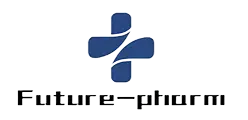
Transforming Global Procurement with Pharmaceutical Supply Advantages for Buyers
In the ever-evolving landscape of global procurement, the pharmaceutical supply chain stands out as a critical component that influences both operational efficiency and strategic decision-making for buyers. As the demand for healthcare products continues to surge, organizations are increasingly challenged to streamline their procurement processes while ensuring quality, compliance, and cost-effectiveness. This blog explores how digital transformation and top-tier procurement strategies can redefine the way businesses manage their pharmaceutical supply chains. By leveraging innovative technologies and data-driven insights, buyers can gain a competitive edge, enhance supplier relationships, and ultimately drive better health outcomes. Join us as we delve into the key advantages that a robust pharmaceutical supply strategy offers, revealing the pathways to a more resilient and responsive procurement model.

Leveraging Technology for Enhanced Procurement Efficiency in Pharmaceuticals
In the rapidly evolving pharmaceutical landscape, leveraging technology for enhanced procurement efficiency is becoming increasingly critical. Recent studies highlight that organizations incorporating artificial intelligence in their procurement processes can experience up to a 30% increase in efficiency. AI-driven technologies facilitate more accurate demand forecasting, streamlined sourcing, and improved supplier collaboration, ultimately leading to significant cost reductions and operational agility. This transition is essential in the wake of global supply chain disruptions, particularly those triggered by the COVID-19 pandemic, which have underscored the need for resilience and adaptability in business operations.
Digital transformation is also reshaping the pharmacy sector, with online platforms emerging as vital tools for procurement optimization. A report indicates that digital procurement processes can cut traditional procurement cycle times by nearly 50%, showcasing how technology not only enhances efficiency but also promotes agility in a sector often hampered by regulatory complexities and market volatility. As pharmaceutical companies strive to build stronger supplier partnerships and enhance their operational frameworks, embracing these technological advancements will be essential to not only survive but thrive in the new era of procurement.
Transforming Global Procurement with Pharmaceutical Supply Advantages for Buyers
| Dimension | Description | Technology Used | Efficiency Improvement (%) |
|---|---|---|---|
| Supplier Management | Streamlining supplier onboarding and evaluation. | Supplier Relationship Management (SRM) Software | 25% |
| Inventory Control | Optimizing stock levels and reducing waste. | Inventory Management Systems | 30% |
| Order Processing | Automating the order placement and tracking. | E-Procurement Tools | 40% |
| Compliance Management | Ensuring adherence to regulatory requirements. | Regulatory Compliance Software | 35% |
| Data Analytics | Utilizing data for informed decision-making. | Business Intelligence Tools | 50% |
Strategies for Identifying Reliable Suppliers in the Global Pharma Market
In the ever-evolving global pharmaceutical market, the quest for reliable suppliers is paramount for buyers aiming to optimize their procurement strategies. Recent industry data indicates that around 60% of pharmaceutical companies face challenges in securing consistent supply chains, highlighting the critical need for effective supplier identification strategies. One approach is leveraging technology-driven solutions, such as AI and big data analytics, which can streamline the evaluation of suppliers based on past performance, compliance, and reliability.
**Tip:** Regularly assess supplier risk by monitoring geopolitical events and regulatory changes that might affect supply availability. This proactive approach enables buyers to be prepared and mitigate potential disruptions.
Moreover, employing a comprehensive supplier audit process is essential. This should involve evaluating not only the supplier's production capabilities but also their adherence to quality standards and regulatory compliance. According to a report by the Global Pharmaceutical Supply Chain Consortium, 75% of procurement professionals emphasize the importance of integrating quality assessments into their supplier evaluation processes.
**Tip:** Build strong relationships with suppliers by engaging in regular communication. This transparency can foster trust and lead to better collaboration, ultimately benefiting both parties in times of need.

Cost-Effective Sourcing: Maximizing Value in Pharmaceutical Procurement
In the ever-evolving pharmaceutical industry, cost-effective sourcing is crucial for maximizing value in procurement practices. Recent studies revealed that pharmaceutical companies could save up to 30% on procurement costs by leveraging strategic supplier relationships and adopting advanced sourcing strategies. For instance, a report by IQVIA highlights that global pharmaceutical spending reached approximately $1.5 trillion in 2020, with procurement efficiency playing a pivotal role in ensuring sustainable profitability. By optimizing the sourcing process, companies not only enhance their bottom line but also improve their overall supply chain resilience.
Moreover, the integration of technology in pharmaceutical procurement is transforming how buyers engage with suppliers. A 2021 report by Deloitte indicates that 58% of pharmaceutical organizations have adopted digital procurement solutions, significantly reducing lead times and procurement cycle durations. This digitization allows for real-time data analysis, enabling buyers to make informed decisions, negotiate better terms, and ultimately achieve greater value. Implementing such innovative sourcing strategies not only mitigates risks associated with supply chain disruptions but also positions organizations to take full advantage of market opportunities.
Navigating Regulatory Challenges: Best Practices for Global Buyers
Navigating the complex landscape of global procurement in the pharmaceutical sector requires strategic insight, particularly when it comes to regulatory challenges. As pharmaceutical buyers expand their reach across borders, they must understand various compliance requirements that vary from one country to another. This includes knowledge of local laws, safety standards, and import/export regulations, which can significantly impact procurement strategies. For effective navigation, buyers should leverage technology and data analytics to streamline compliance processes and ensure they are staying ahead of regulatory changes.
Best practices for global buyers include fostering strong relationships with local suppliers and regulatory bodies. By engaging with stakeholders early in the procurement process, buyers can gain valuable insights into local market dynamics and regulatory expectations. Additionally, maintaining transparency in all dealings promotes trust and accountability. Implementing continuous training for procurement teams on regulatory updates also ensures that organizations remain compliant and agile in adapting to any shifts in the regulatory landscape. By prioritizing these strategies, pharmaceutical buyers can not only mitigate risks but also enhance their operational efficiency in a competitive global market.

Building Strategic Partnerships for Long-Term Pharmaceutical Supply Success
In the ever-evolving landscape of pharmaceutical procurement, forming strategic partnerships is essential for buyers aiming to secure a reliable and effective supply chain. By collaborating closely with suppliers, pharmaceutical companies can not only enhance their access to quality products but also streamline their operations. These partnerships allow buyers to gain critical insights into market trends, regulatory changes, and technological advancements, which can ultimately provide a competitive edge in a crowded marketplace.
Moreover, building long-term relationships with suppliers fosters transparency and trust, reducing the risk associated with supply disruptions. It enables both parties to engage in joint planning, fostering innovation through shared knowledge and resources. As the demand for pharmaceuticals continues to rise globally, strategic partnerships empower buyers to navigate challenges more effectively, ensuring consistency in supply while also adapting to shifting market dynamics. This collaborative approach not only leads to operational efficiency but also supports the broader goal of improving patient outcomes through consistent access to essential medications.
